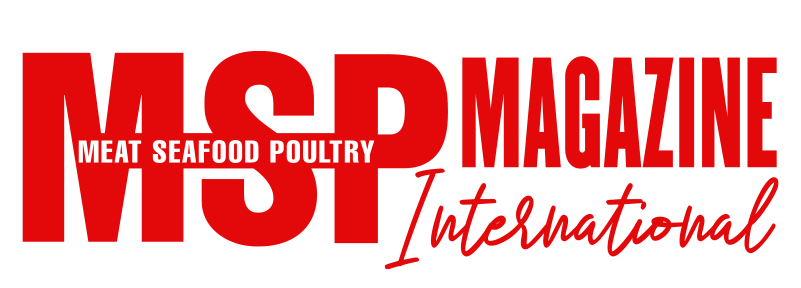The Food and Drug Administration (FDA) may be transitioning food safety inspections to state agencies due to staffing and budget cuts at the federal level. Some reports indicate that 100% of food inspections could become the states’ responsibility.
Could budget cuts, staffing shortages, and a transition to state-led inspections compromise food safety? Consider that: Pivoting from national to state-led oversight could lead to inspection inconsistencies.

- Some safety inspectors are canceling international trips that are essential for overseeing safety and quality at food production factories.
Without proper and consistent inspections, it may be more difficult to identify – and rectify – food safety issues.
Even before this potential transition, the FDA was already struggling to meet food inspection goals. According to a Government Accountability Office report, the FDA hasn’t met its foreign or domestic food inspection goals since 2018, due to a shortage of qualified inspectors, pandemic-related travel challenges, etc.
These challenges raise an important question: if regulatory oversight becomes less consistent, how will the food industry maintain safety and accountability?
That’s where automation comes in. Automation offers a powerful way to bring structure, speed, and consistency to food safety, especially in recall management. One of its most important benefits is standardization. Whether oversight remains federal or shifts to the states, companies need food safety processes that operate effectively regardless of the regulatory landscape. Public safety depends on it. For that reason – and many others – the industry must move away from manual systems and toward modern, automated recall solutions.
Recalls Remain a Constant
Food recalls are a constant. So far in 2025, recalled foods have included pork, celery, baby food, egg whites, and hummus. Fortunately, technology makes managing recalls easier, faster, and more accurate. Food businesses need to start relying on tech tools, yet many resist changing their systems from antiquated manual systems (paper files, Excel spreadsheets) to tech-forward solutions, fearing that they’re too expensive, complicated, or labor-intensive. In fact, the opposite is true.
During a recall, food brands can’t be fumbling with paper files, manually calling trading partners, or trying to pinpoint the exact locations of contaminated products using an old Excel spreadsheet. These manual efforts are slow, ineffective, and high-risk. Since a recall could happen to anyone, every food business must be prepared to properly manage recalls – and that includes using the best tools for this effort.
Automation Offers Significant Benefits
The benefits of automation for recall management can’t be overstated. For instance, automation improves:
Speed. Food businesses must be accurate and efficient with their recall efforts. Using manual methods to gather product data, share information with trading partners, and locate all impacted products is inefficient and high-risk. It’s much faster and more accurate to automate these efforts. For instance, automated workflows allow teams to do the right things in the right order. Companies can input recall information and launch automated communication in minutes. Real-time dashboards provide key insights and visibility, digital traceability systems track product movement, and integrated contact databases accelerate notification to stakeholders. In fact, automating the recall process can cut recall times in half (or more), resulting in substantial labor and operational cost savings up to 90%.
Visibility. Automation enables more accurate tracking of products (and their ingredients) at every point in the supply chain. Better visibility allows food businesses to pinpoint the contamination source, determine exactly where contaminated products have traveled, and ensure proper removal action for faster, more complete recalls.
Collaboration. The food industry lacks data standards and system integration, which is problematic in a recall. When trading partners use different systems, processes, and data, it hinders recall speed, efficiency, and accuracy. Conversely, using a unified, automated tech system allows trading partners to identify, collect, and share information for a single source of truth.
Communication. Recalling companies must be transparent about what happened and what happens next. It’s important to proactively disseminate this critical information to key stakeholders, including trading partners, regulators, and consumers. Push notifications ensure that these audiences receive consistent, accurate, timely communication to drive desired actions. Mobile-first platforms enable rapid communication and can be more effective than manually calling or emailing contacts.
Compliance. Tech tools automate and improve record-keeping, which is essential for compliance. All recall activities must be properly documented, a difficult, time-consuming task using manual methods. Handwritten records can be messy or misplaced, and Excel spreadsheets often have errors and issues with version control. On the other hand, automation streamlines report generation, making it easy to provide regulators with the information they need for compliance.
Customer trust and loyalty. Issuing a recall doesn’t necessarily erode customer trust and loyalty – it’s how the food business handles the recall that really impacts their brand reputation. Many consumers understand that recalls can be a proactive effort to protect public health, rather than a brand failure. They won’t necessarily blame a food brand for issuing a recall – but they expect to see the recalling company act swiftly to remove contaminated products from the marketplace, communicate clearly about the issue, and reiterate their ongoing commitment to food safety. Consumers want to see companies take ownership, show integrity, and demonstrate that protecting public health is their #1 concern. Automation allows food businesses to communicate directly to consumers with tailored messaging based on purchase patterns. Additionally, tech solutions help foster a culture of continuous improvement, so food businesses can reassure consumers that they’re prioritizing food safety and public health.
How to Effectively Incorporate Automation
When issuing a recall, quick action, collaboration, and communication are essential. Automation elevates all these efforts.
To improve recall preparedness and response, food businesses would be wise to:
Audit your current recall process to identify where manual tasks create bottlenecks.
Choose platforms built for recall execution to boost accuracy, efficiency, speed, etc. Leverage tools that offer integrated contact databases, real-time dashboards, audit-ready reporting, and interoperability with your trading partners.
Train your team on these tech tools before you need them, so they know how they work prior to a recall situation.
While food businesses can’t control what happens with the FDA and the possible transition to state-led food safety inspections, they can control how they prepare for recalls. Automating the recall process is one of the smartest moves that food brands can make, improving all aspects of recall management. Pivot from manual to automated systems to boost visibility, communication, speed, accuracy, collaboration, consistency, and even customer loyalty. This effort will help food brands minimize damage, mitigate risks, and protect public health.
Roger Hancock, CEO of Recall InfoLink is one of the world’s foremost experts on recalls, with experience that spans the retail, tech, data, regulatory, and supply chain.
Recall InfoLink makes recalls faster, easier, and more accurate across the supply chain to protect consumers and brands. As the only company focused entirely on recalls, Recall InfoLink’s solutions drive immediate action, streamline the recall process, and simplify compliance. Recall InfoLink helps brands become Recall Ready by standardizing data, collaborating with their supply chains, and practicing recall simulations.
www.recallinfolink.com

